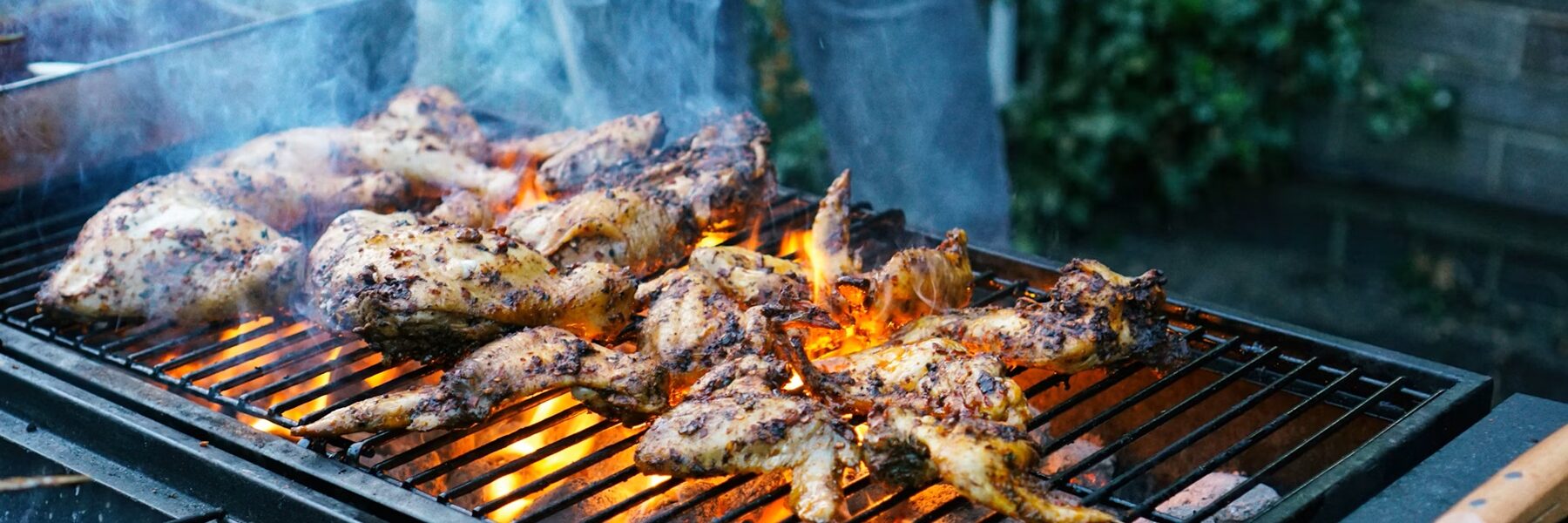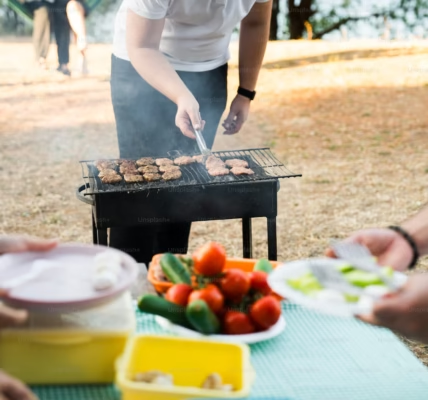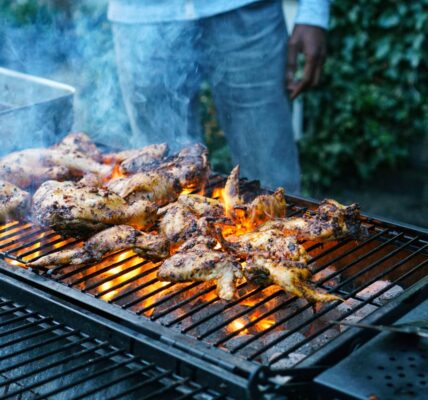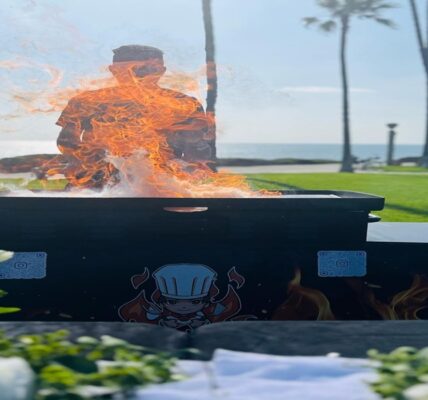Hibachi vs. Teppanyaki: What’s the Difference in Catering?
Catering can elevate any event, offering guests not just a meal but an experience. Among the various styles of catering, Japanese culinary arts stand out, particularly hibachi and teppanyaki. While these terms are often used interchangeably, they represent distinct cooking methods and dining experiences. Understanding the differences between hibachi and teppanyaki can help you make an informed decision for your next catered event.
Historical Background
Hibachi and teppanyaki have rich histories that contribute to their unique characteristics.
Hibachi
The term “hibachi” translates to “fire bowl” in Japanese, and it traditionally refers to a small, portable heating device that burns charcoal. Originally used for heating rather than cooking, hibachis became popular in Japanese households for warming rooms. The adaptation of hibachi for cooking purposes likely began with simple grilling over charcoal.
Hibachi cooking typically involves an open-top container where charcoal is used to grill food. In modern settings, hibachi grills are often larger and adapted for cooking, but the essence of using direct heat from charcoal remains.
Teppanyaki
Teppanyaki, on the other hand, is a more recent development. The term combines “teppan,” meaning iron plate, and “yaki,” meaning grilled or cooked. This style emerged in post-World War II Japan, with the first teppanyaki restaurant, Misono, opening in 1945. Unlike hibachi, teppanyaki uses a solid, flat iron griddle to cook food.
Teppanyaki gained international fame not only for the food but also for the performance aspect, with chefs displaying remarkable skill and showmanship as they prepare the meal in front of diners. This interactive and entertaining dining experience has made teppanyaki a popular choice for special occasions.
Cooking Methods and Equipment
Understanding the differences in cooking methods and equipment can help clarify why hibachi and teppanyaki are distinct.
Hibachi Cooking
Hibachi grilling involves cooking food over an open flame, usually fueled by charcoal. The grill itself is typically a simple, portable device with an open top where the charcoal burns. This method imparts a unique, smoky flavor to the food, making it particularly well-suited for meats, seafood, and vegetables.
Hibachi grills are usually smaller, which can limit the variety of dishes that can be cooked simultaneously. However, the intense, direct heat allows for quick cooking, which is ideal for thin cuts of meat and bite-sized pieces.
Teppanyaki Cooking
Teppanyaki cooking uses a large, flat iron griddle heated by gas or electricity. The griddle’s expansive surface allows chefs to cook multiple ingredients at once, making it ideal for preparing a diverse menu. The even heating of the teppan ensures consistent cooking, and the flat surface is perfect for sautéing, searing, and grilling.
One of the hallmarks of teppanyaki is the chef’s performance. Chefs often showcase their culinary skills with dramatic flair, such as flipping shrimp into their hats, creating onion volcanoes, and precisely slicing ingredients. This theatrical element adds an entertaining dimension to the dining experience.
Menu and Flavor Profiles
The differences in cooking methods between hibachi and teppanyaki result in distinct menu offerings and flavor profiles.
Hibachi Menu and Flavors
Hibachi cuisine often focuses on simplicity and the natural flavors of the ingredients. The smoky aroma from the charcoal grilling enhances the taste of meats and vegetables. Common dishes include grilled shrimp, steak, chicken, and various vegetables. The emphasis is on fresh, high-quality ingredients seasoned with basic spices, soy sauce, and sometimes a squeeze of lemon.
Diners can expect a straightforward, flavorful meal that highlights the ingredients’ inherent qualities. The simplicity of hibachi cooking makes it a versatile option that can cater to a wide range of tastes.
Teppanyaki Menu and Flavors
Teppanyaki menus are typically more elaborate, offering a wider variety of dishes. In addition to grilled meats and seafood, teppanyaki often includes rice, noodles, and a range of sauces and seasonings. The flat griddle allows for intricate cooking techniques, such as stir-frying and sautéing, which can create complex flavors and textures.
The chef’s ability to control the cooking process precisely means that each dish can be tailored to the diner’s preferences, from the level of doneness to the seasoning. Teppanyaki often features rich, savory flavors, with ingredients like garlic, butter, soy sauce, and teriyaki sauce playing prominent roles.
Catering Considerations
When deciding between hibachi and teppanyaki for catering, consider the nature of your event, the preferences of your guests, and the logistical requirements.
Hibachi Catering
Hibachi catering is well-suited for smaller, more intimate gatherings. The portability of hibachi grills means they can be set up in various locations, including outdoor spaces. The grilling process is relatively quick, making it easy to serve a large number of guests in a short time.
However, hibachi catering may have limitations in terms of menu variety. The focus on grilled items means fewer options for side dishes and complex recipes. Additionally, the smoky aroma, while appealing, might not be suitable for all venues, particularly indoor locations with limited ventilation.
Teppanyaki Catering
Teppanyaki catering offers a more comprehensive dining experience, combining culinary excellence with entertainment. The large griddles used in teppanyaki cooking can handle a wide range of dishes, making it possible to offer a diverse menu that caters to various tastes and dietary requirements.
The performance aspect of teppanyaki can be a major draw for events, providing guests with not just a meal but a memorable experience. However, the equipment required for teppanyaki catering is more substantial, and the setup may be more complex, requiring adequate space and ventilation.
Choosing the Right Option for Your Event
Selecting between hibachi and teppanyaki catering depends on several factors, including the size and style of your event, the preferences of your guests, and the available facilities.
Event Size and Style
For smaller, casual gatherings, hibachi catering can be an excellent choice. The simplicity of the setup and the focus on grilled items make it easy to manage and serve. The smoky, flavorful dishes are sure to please guests looking for a straightforward, delicious meal.
For larger events or those seeking a more upscale, interactive experience, teppanyaki catering is ideal. The combination of a diverse menu and the chef’s performance can create a dynamic atmosphere that engages guests and enhances the overall event.
Guest Preferences
Consider the culinary preferences of your guests. If they enjoy straightforward, grilled flavors and a relaxed dining experience, hibachi catering will likely be a hit. For guests who appreciate a wider variety of dishes and the added entertainment of live cooking, teppanyaki catering will be more appealing.
Facilities and Logistics
Evaluate the facilities available at your event venue. Hibachi grills are more portable and can be used in a variety of settings, making them a flexible option. Teppanyaki catering, however, requires more space and equipment, including large griddles and adequate ventilation.
Conclusion
Hibachi and teppanyaki each offer unique dining experiences that can enhance your event. Understanding the differences between these two styles of Japanese cooking can help you choose the right catering option to match your needs and delight your guests. Whether you opt for the smoky simplicity of hibachi or the interactive performance of teppanyaki, you can be sure that your event will be remembered for its exceptional cuisine and engaging atmosphere.





